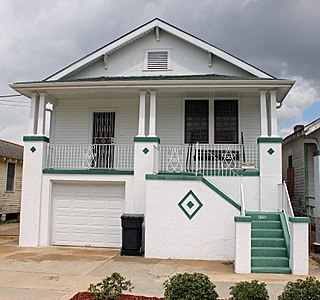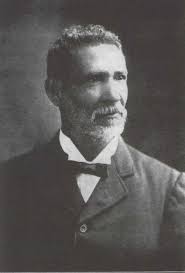Related Research Articles
Plessy v. Ferguson, 163 U.S. 537 (1896), was a landmark U.S. Supreme Court decision ruling that racial segregation laws did not violate the U.S. Constitution as long as the facilities for each race were equal in quality, a doctrine that came to be known as "separate but equal". The decision legitimized the many state laws re-establishing racial segregation that had been passed in the American South after the end of the Reconstruction era in 1877. Such legally enforced segregation in the south lasted into the 1960s.
Separate but equal was a legal doctrine in United States constitutional law, according to which racial segregation did not necessarily violate the Fourteenth Amendment to the United States Constitution, which nominally guaranteed "equal protection" under the law to all people. Under the doctrine, as long as the facilities provided to each race were equal, state and local governments could require that services, facilities, public accommodations, housing, medical care, education, employment, and transportation be segregated by race, which was already the case throughout the states of the former Confederacy. The phrase was derived from a Louisiana law of 1890, although the law actually used the phrase "equal but separate".

Edward Douglass White Jr. was an American politician and jurist. White, a native of Louisiana, was a U.S. Supreme Court justice for 27 years, first as an associate justice from 1894 to 1910, then as the ninth chief justice from 1910 until his death in 1921. White is known for siding with the Supreme Court majority in Plessy v. Ferguson, which upheld the legality of state segregation.

Homer Adolph Plessy was an American shoemaker and activist, who was the plaintiff in the United States Supreme Court decision Plessy v. Ferguson. He staged an act of civil disobedience to challenge one of Louisiana's racial segregation laws and bring a test case to force the U.S. Supreme Court to rule on the constitutionality of segregation laws. The Court decided against Plessy. The resulting "separate but equal" legal doctrine determined that state-mandated segregation did not violate the Fourteenth Amendment to the United States Constitution as long as the facilities provided for both black and white people were putatively "equal". The legal precedent set by Plessy v. Ferguson lasted into the mid-20th century, until a series of landmark Supreme Court decisions concerning segregation, beginning with Brown v. Board of Education in 1954.

Straight University, was an American historically black college that operated between 1868 and 1934 in New Orleans, Louisiana. After struggling with financial difficulties, it was merged with New Orleans University to form Dillard University.
Missouri ex rel. Gaines v. Canada, 305 U.S. 337 (1938), was a United States Supreme Court decision holding that states which provided a school to white students had to provide in-state education to Black students as well. States could satisfy this requirement by allowing Black and white students to attend the same school or creating a second school for Black students.

Alexander Pierre "A. P." Tureaud Sr. was an African-American attorney who headed the legal team for the New Orleans chapter of the NAACP during the Civil Rights Movement. With the assistance of Thurgood Marshall and Robert Carter from the NAACP Legal Defense and Educational Fund, A. P. Tureaud filed the lawsuit that successfully ended the system of Jim Crow segregation in New Orleans. That case paved the way for integrating the first two elementary schools in the Deep South.
Pace v. Alabama, 106 U.S. 583 (1883), was a case in which the United States Supreme Court affirmed that Alabama's anti-miscegenation statute was constitutional. This ruling was rejected by the Supreme Court in 1964 in McLaughlin v. Florida and in 1967 in Loving v. Virginia. Pace v. Alabama is one of the oldest court cases in America pertaining to interracial sex.
John Howard Ferguson was an American lawyer and judge from Louisiana, most famous as the defendant in the Plessy v. Ferguson case.
The Jim Crow laws were state and local laws introduced in the Southern United States in the late 19th and early 20th centuries that enforced racial segregation, "Jim Crow" being a pejorative term for an African American. Such laws remained in force until 1965. Formal and informal segregation policies were present in other areas of the United States as well, even as several states outside the South had banned discrimination in public accommodations and voting. Southern laws were enacted by white-dominated state legislatures (Redeemers) to disenfranchise and remove political and economic gains made by African Americans during the Reconstruction era. Such continuing racial segregation was also supported by the successful Lily-white movement.

Charles Erasmus Fenner was a Louisiana lawyer who captained a battery in the American Civil War, and later served as a justice of the Louisiana Supreme Court from April 5, 1880, to September 1, 1893. During his service on the court, he hosted a dying Jefferson Davis in his home, and wrote the infamous decision in Plessy v. Ferguson holding that "separate but equal" accommodations could be provided for whites and non-whites, which was upheld by the United States Supreme Court.

Rodolphe Lucien Desdunes was a Louisiana Creole civil rights activist, poet, historian, journalist, and customs officer primarily active in New Orleans, Louisiana.

Daniel F. Desdunes was a civil rights activist and musician in New Orleans and Omaha, Nebraska. In 1892 he volunteered to board a train car designated for whites in violation of the Louisiana 1890 Separate Car Act. This would be a test case to enable the New Orleans Comité des Citoyens to challenge the law in the courts. The train he boarded was an interstate train, and the court found that the law did not apply to such cases, which were bound by federal law and regulation. Shortly thereafter, another member of the Comité des Citoyens, Homer Plessy, was selected to board an intrastate train. He was arrested for refusing to leave the white car, and what became known as Plessy vs Ferguson (1896) was litigated to the US Supreme Court.

The Fuller Court refers to the Supreme Court of the United States from 1888 to 1910, when Melville Fuller served as the eighth Chief Justice of the United States. Fuller succeeded Morrison R. Waite as Chief Justice after the latter's death, and Fuller served as Chief Justice until his death, at which point Associate Justice Edward Douglass White was nominated and confirmed as Fuller's replacement.
The Comité des Citoyens was a civil rights group made up of African Americans, whites, and Creoles. It is most well known for its involvement in Plessy v. Ferguson. The Citizens' Committee was opposed to racial segregation and was responsible for multiple demonstrations in which African Americans rode on the "white" cars of trains.
Hall v. Decuir, 95 U.S. 485 (1878), was a decision of the Supreme Court of the United States. In Hall, Josephine Decuir, a wealthy woman designated a Creole, sued for racial discrimination she experienced on a steamboat. She was traveling from New Orleans to Pointe Coupee Parish, where she owned a sugar plantation.
Transport and bus boycotts in the United States were protests against the racial segregation of transport services. These occurred before the passage of the 1964 Civil Rights Act, which outlawed such forms of discrimination.
Louisville, New Orleans & Texas Railway Co. v. Mississippi, 133 U.S. 587 (1890), was a case in which the Supreme Court of the United States upheld a Mississippi law that required railroads to racially segregate their passengers. The Court in Hall v. Decuir (1878) had struck down a similar Louisiana law on the grounds that it unreasonably interfered with Congress's power to regulate interstate commerce. A railroad challenged the Mississippi law on the same ground, arguing that it violated the Dormant Commerce Clause by burdening interstate commerce. The Supreme Court, dividing 7 to 2, disagreed. Writing for the majority, Justice David Josiah Brewer distinguished Hall on the basis that Mississippi's law, unlike Louisiana's, applied solely to intrastate commerce. Justices John Marshall Harlan and Joseph P. Bradley dissented. According to Harlan, the Mississippi law subjected all trains, including those involved in interstate commerce, to the segregation requirement. Finding no differences between the case and Hall, he voted to strike down the law.

The East Louisiana Railroad, chartered in 1887, was a railroad in Louisiana and Mississippi, United States. It was formed to connect Pearl River, Louisiana, to Covington, Louisiana, and Lake Pontchartrain.
References
- Hasian Jr., Marouf (2006). "Revisiting the Case of Plessy v. Ferguson". In Clarke Rountree (ed.). Brown V. Board of Education at Fifty: A Rhetorical Retrospective. Lexington Books. ISBN 0-7391-0854-9.
- Margo, Robert Andrew (1990). Race and Schooling in the South, 1880–1950: An Economic History. Chicago: University of Chicago Press. ISBN 0-226-50510-3.
- Packard, Jerrold M. (2003). American Nightmare: The History of Jim Crow. Macmillan. ISBN 0-312-30241-X.